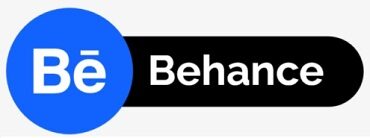The modern workplace is a landscape of data. From project metrics to performance reviews, evidence-based insights are increasingly driving career advancement and organizational strategy. In this environment, tools that provide clarity and objectivity are invaluable. This is where modern employee monitoring software enters the conversation, not as a punitive oversight tool, but as a platform for mutual growth and efficiency.
At its core, a solution like Controlio is a sophisticated SaaS for employee monitoring and time-tracking. It is designed to move beyond guesswork, providing tangible data on work patterns that can illuminate the path to greater productivity and professional development. For ambitious professionals and forward-thinking managers, understanding how to leverage these employee management tools can be a significant differentiator, offering a clear view of contributions that might otherwise go unnoticed in a hybrid or remote setting.
From Data to Development: How Monitoring Informs Career Growth
The data generated by a robust time-tracking software platform can serve as a powerful foundation for career conversations. Instead of relying on vague recollections of a busy quarter, employees and managers can review concrete work-hour analytics and project performance metrics. This objective evidence can highlight an individual’s efficiency, their ability to meet deadlines, and their contribution to team goals.
For instance, data might reveal that an employee consistently completes certain tasks ahead of schedule, suggesting an aptitude that could be leveraged in a new role. Alternatively, it could show that someone is spending a disproportionate amount of time on administrative tasks, signaling an opportunity for automation or training. When paired with effective career planning tools, this information transforms from simple activity logs into a strategic roadmap for skill development and advancement.
A Personal Observation: The Unseen Contributor
I recall a team member, “Sarah,” who was quiet in meetings but always delivered quality work. During a performance review, her manager used data from their monitoring system to highlight her exceptional efficiency on complex projects. The analytics showed she had developed a unique method that saved several hours per week. This data wasn’t used to monitor her but to recognize her. It led to her leading a workshop to train other team members, boosting her visibility and accelerating her career trajectory. This is the potential of data insights when used constructively.
Key Features That Drive Modern Workforce Management
When evaluating different platforms, it’s important to look for features that support both operational oversight and employee empowerment. Leading solutions in the employee monitoring software space typically offer:
- Automated Time-Tracking:This goes beyond simple clock-in/clock-out, providing insights into time allocation across different projects and tasks.
- Productivity Analytics:Understanding application and website usage helps categorize productive activity, offering a basis for optimizing workflows.
- Project Performance Dashboards:Linking time data directly to projects allows for accurate billing, resource allocation, and performance assessment.
- SaaS Security & Compliance Tracking:These features help protect sensitive company data and ensure adherence to industry regulations, a critical aspect of remote workforce management.
- Cloud-Based Reporting:As a cloud-based solution, it offers secure, real-time access to dashboards and reports, facilitating management from any location.
The Competitive Landscape: A Look at Top SaaS Players
The market for employee monitoring is diverse, with several established players offering distinct strengths. A brief comparison helps contextualize where different tools fit.
- Hubstaff and Time Doctor:These are often recognized for their strong, granular time-tracking and productivity measurement features, making them popular for remote teams and project-based billing.
- Insightful and ActivTrak:These platforms focus on providing high-level behavioral analytics and visual productivity maps, offering managers a broad overview of team engagement and work patterns.
- Kickidler:This solution is known for its powerful session recording and user activity monitoring, often appealing to sectors with high cybersecurity and compliance demands.
In this competitive field, the Controlio tool positions itself as a comprehensive platform. It integrates the detailed, project-focused time-tracking of a Hubstaff with the advanced behavioral analytics and security features found in platforms like Kickidler. For businesses seeking a unified system for productivity analytics, project management, and cybersecurity within their HR tech stack, this integrated approach is a compelling proposition.
Your Questions on Employee Monitoring, Answered
Q1: How can monitoring software be introduced without creating distrust?
A: The key is transparency and purpose. Communicate that the tool is being implemented to eliminate tedious manual reporting, identify process inefficiencies that frustrate everyone, and ensure fair workload distribution. Position it as a system for organizational improvement that supports employees by making their contributions more visible.
Q2: Is the use of this software legal?
A: In most jurisdictions, yes, provided employers are transparent about its use. It is essential to have a clear, written policy that employees acknowledge. This policy should outline what data is collected, how it will be used, and who has access, ensuring compliance with local privacy laws.
Q3: Can this data actually help my career?
A: Absolutely. Objective data from these platforms can provide undeniable proof of your productivity, efficiency, and ability to manage complex projects. It takes the subjectivity out of performance reviews and allows you to build a case for promotion or a raise based on concrete achievements.
Q4: What’s the difference between this and the time-tracking tools we already use?
A: Basic time-tracking tools often just record hours worked. Comprehensive employee monitoring software includes time-tracking as one component of a larger system that encompasses productivity analysis, project integration, and cybersecurity features, offering a holistic view of work.
Final Note: Embracing a Data-Informed Work Culture
The evolution of employee monitoring software reflects a broader shift towards data-informed management and career development. When implemented with a focus on transparency and growth, platforms like Controlio cease to be mere oversight mechanisms and become strategic partners. They provide the clarity needed to optimize operations, secure digital assets, and, most importantly, recognize and cultivate talent in an increasingly distributed world.
By embracing these insights, both organizations and individuals can navigate the complexities of the modern workplace with greater confidence and purpose, turning raw data into a catalyst for professional achievement.





